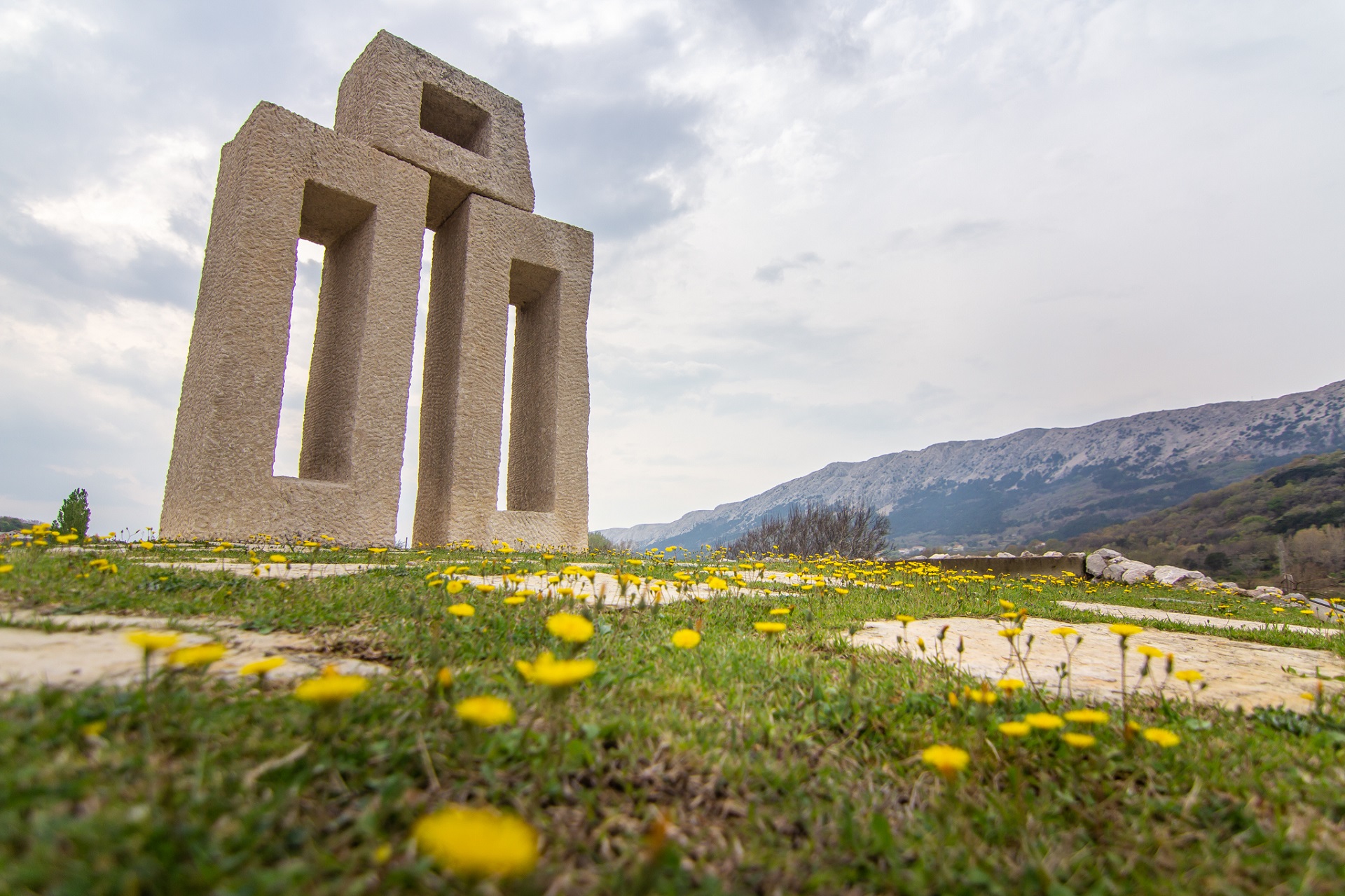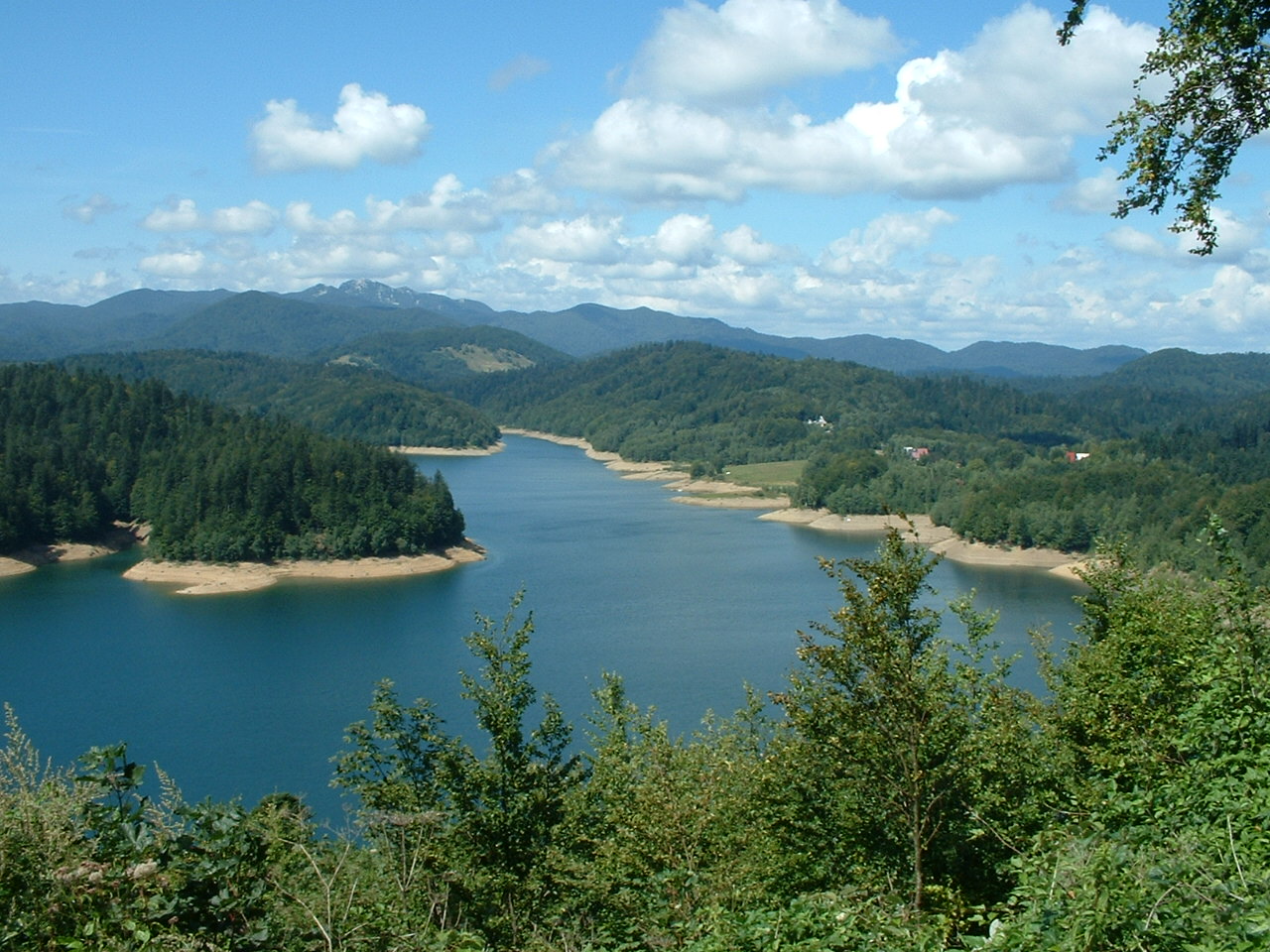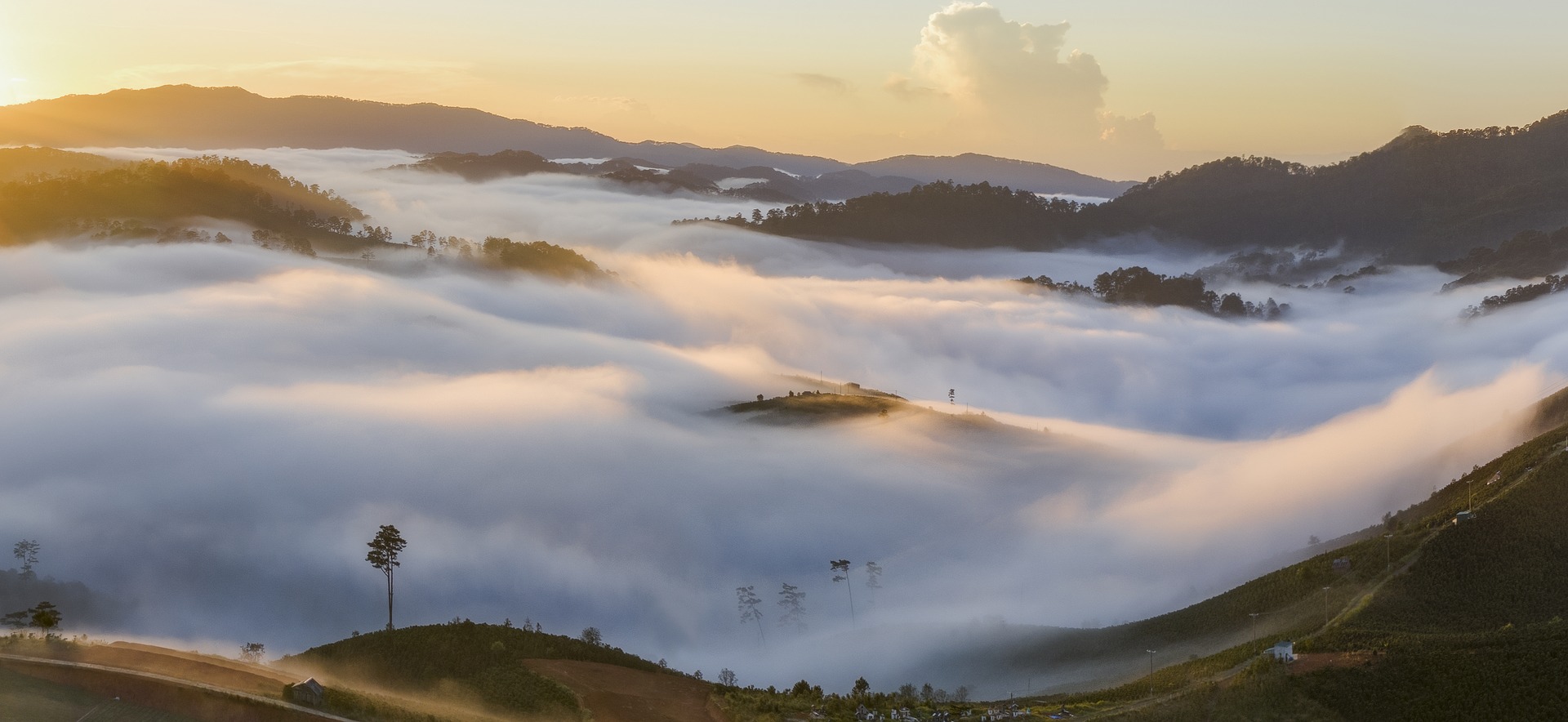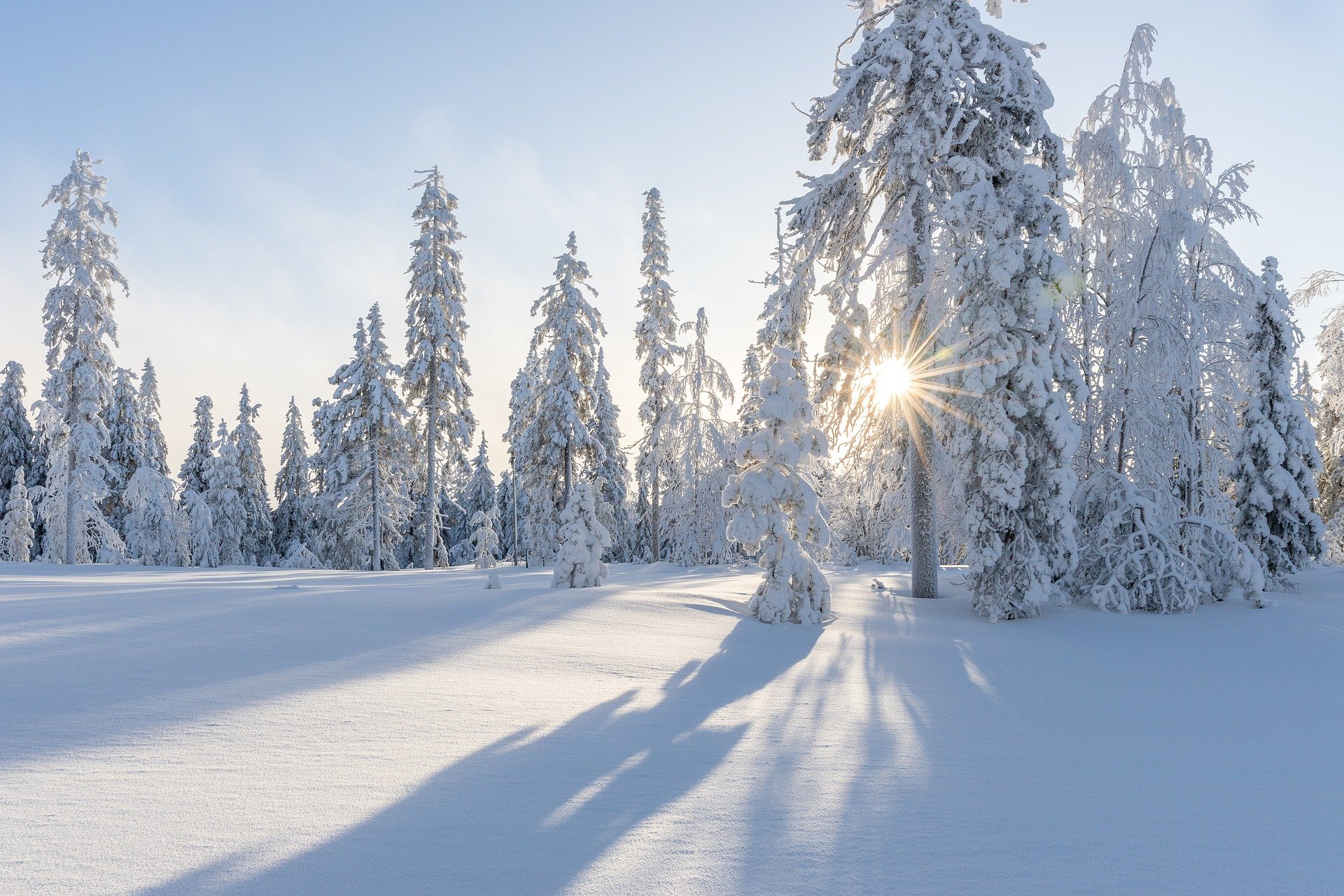Moslavina Magic: Croatian Folklore Comes to Life in New Nina Kraljic Music Video
February 22nd, 2022 - The cover is part of the singer’s project Alkonost of Balkan, inspired by Slavic folklore and featuring videos filmed exclusively in nature
Singer Nina Kraljić released a cover of an old Croatian folk song originating from the Moslavina region. Titled ‘Lijepo pjeva za lugom djevojka’ (A girl sings beautifully in the woods), the seldom performed song got a beautiful video as well, filmed on the Moslavacka Gora hill.
Nina and the filming crew spent two days in the region, exploring Moslavacka Gora, reports Novi list. The result is a video that celebrates Croatian cultural heritage and pays respect to traditions and history of Moslavina.
In the video, the singer is wearing authentic folk costumes from the Moslavina region, as well as folk-inspired Etno Mara designs. The video was filmed in the woods of Moslavina hill, including scenic locations such as the Vis viewpoint and the ruins of a former monastery named Bela Crkva.
In order to breathe new life into this precious part of Croatia’s intangible heritage, Nina’s team joined forces with the tourist boards of Kutina, Popovača, and Sisak-Moslavina County, as well as the Rural Escape tourism agency that assisted them with location scouting.
The song and video are part of Nina’s music project Alkonost of Balkan, described as an ‘epic, dark folk project interested in the soul, that which is uncorrupted and unchangeable from the beginning of time. Inspired by the ethnic, film score sounds of the entire world and our Slavic heritage with videos shot exclusively in nature.’
Watch the video below:
The singer said, ‘I’m overjoyed that my project Alkonost of Balkan, dedicated to our ethnic music and heritage, continues with this wonderful Moslavina song! It’s from the heart that I present you with a new song and video. I did my best to demonstrate it through the beauty of sound, lyrics and locations just how beautiful our country is, how rich our heritage is, and how wonderful it is to respect our traditions! I’m proud of my entire team who made sure this ‘Moslavina magic’ saw the light of day! We’ll keep working and creating such songs and videos originating from different parts of our homeland and the wider region, as we have to cherish and appreciate what is ours’, said the singer, once again expressing how proud she was of the project and thanking the sponsors who helped bring the new video to life.
Here are the lyrics in Croatian and English:
Lijepo pjeva za lugom djevojka
Lijepo pjeva daleko se čuje
Slušali je Ivo i Nikola
Ivo veli: "Moja je djevojka!"
A Nikola: "Nije, nego moja."
A girl sings beautifully in the woods
She sings beautifully, it can be heard from afar
To her listened Ivo and Nikola
Ivo says: She’s my girl!
And Nikola: No she’s not, she’s mine.
How Much for a Cold Drink on Krk Island? Just Give Baba a Kiss
An ancient custom on Krk island involves planting a kiss on a wet rock on the side of the road. Looking into the curious ethnological phenomenon on February 1, 2022
Many holidaymakers have discovered the charms of Baška, a picture-perfect town on Krk island. There’s plenty for this dreamy destination to boast, including a 1800m long pebble beach ideal for those who love to soak up the sun, and adventure trails for visitors who prefer an active vacation.
Visiting Baška wasn’t such a simple feat back in the day, judging by an ethnological phenomenon described by Alan Žic-Teklin of KrkDiscovered. When arriving in Baška for the first time, one was obliged to kiss a wet old woman on the way to town. No, this doesn't sound any more enticing nor any less wrong in Croatian: poljubiti mokru babu.
(Baba stands for old woman, crone or grandma, depending on the context. In this scenario, it falls somewhere between the first two, but we’ll go with the more respectful option to avoid upsetting any ancient spirits. You never know.)
Thankfully, this particular baba was simply a common nickname for stone monoliths scattered over the island. Always located in damp spots near water springs - hence the wet part of the name - the rocks were referred to as babe and the custom dictated to give them a kiss when passing by.
Where did this come from? Legend has it that St Jerome (4th century AD) was visiting the bishop of Krk and got thirsty while traversing the island. He hit a rock with his staff, causing water to spring from stone.
Since one would have to lean close to the rock and press their lips against the surface to get a drink of water, this would have resembled kissing the rock, and so the saying was born.
Legends aside, the local custom of kissing the stone baba has long been a subject of interest of historians and ethnologists. Jelka Vince-Pallua, PhD proposed a theory that the custom originates from ancient fertility cults that were practised before the monoliths, while ethnologist Nikola Bonifačić-Rožin considers that the ‘old women’ stem from an ancient superstition that the rocks will prevent the floods from washing away precious fertile soil.
The best known baba on Krk island used to be located on the side of the road at the locality Žanac near Baška. The ancient rock isn’t there anymore and has been replaced with another one, but to keep up with tradition a pipe has been installed on the location, allowing passersby to get a drink of cold water.
And the new rock that stands in place of the old monolith? It’s part of the Baška Glagolitic Alphabet Trail, a series of 35 stone sculptures displayed on a trail meandering through the Baška Valley, each bearing a different letter of the Glagolitic alphabet.
Glagolitic letters Ž and E are carved into this particular stone, standing for Žanac est! Loosely translated, it means ‘Here is the Žanac spring!’ pointing to the wealth of water resources in the area. As early as the Stone age, people inhabiting Krk island first settled in Baška Valley precisely for its many water springs.
Even though it’s not the original baba, the sculpture allows travellers in passing to respect the ancient custom and give baba a peck on the cheek if they so decide. Don’t find the prospect that enticing? You can simply mark the sculpture on your Glagolitic Trail guide - every monument has a small plaque with raised letters you can copy into the blank pages in the guide. (Copy them all as proof you visited all the locations on the trail, and you get a little gift.)

The letter L, sculpture by Ljubo de Karina / visitbaska.hr
The Glagolitic Trail project was devised by the Sinjali Association for culture, tradition and ecology from Krk. Each sculpture was sponsored by a different town; four were created by the renowned Croatian sculptor Ljubo de Karina, the rest were made by fifteen art academy students from Croatia, Slovenia, Austria and the Czech Republic.
The trail was created to highlight the rich cultural heritage of Krk island and to serve as a reminder of the importance of the Glagolitic alphabet in Croatian history. The Baška tablet in particular - perhaps the most distinguished attraction in Baška, at least where Croatian culture and history are considered.
Discovered in the church of St Lucy in Jurandvor and dating to 1100, the limestone tablet is a legal document bearing an inscription where the Croatian name (hrvatski) is mentioned in writing for the first time in history, in Glagolitic script.
You can learn more about the Baška Glagolitic Trail in this pdf guide, and follow Krk Discovered on Facebook.
Weather Lore in Croatia: Lokve Folk Calendar Predicts the Weather in 2022
January 9th, 2022 - How did people go about predicting the weather back in the day, before the invention of measuring instruments? Looking into a traditional method preserved in Lokve, a town in Gorski kotar where folk meteorologists predict the weather for the year ahead based on a short period in December
We’re a bit spoiled these days with detailed weather forecasts awaiting only a few clicks away. Have you ever wondered how people used to go about this before weather apps and modern meteorology? With no measuring instruments yet invented, they had only their environment and the skies above to rely on, giving way to a diverse body of weather folklore.
There are many folk sayings and customs related to weather in Croatia - too many for a single post. This time, we’ll focus on an old tradition that’s been passed down for generations among the people of Lokve, a town in the Gorski kotar region.
Called ‘brojanica’ in Croatian, the traditional method allows for predicting what the weather will be like in the entire year based on a short period in December - a fine example of weather lore preserved to this day.
Local folk meteorologists in Lokve carefully track weather conditions and changes during the 12 days between the holiday of St Lucia (December 13th) and Christmas Eve (24th). Each of those days is associated with one of 12 months in a year; the weather conditions recorded on a given day are taken as a forecast for the whole related month, with some adjustments to fit the different seasons. E.g. if it’s cold and sunny on St Lucia, it’s expected that the whole month of January will be cold and sunny as well.

Lake Lokve / velfran
Novi list reported that the diligent folk meteorologists in Lokve kept a close eye on the weather this past December as well, resulting in publication of the 2022 Lokve calendar with the forecast for the entire year.
What awaits us in 2022? The calendar designer Nikola Pleše says we don’t have to worry about extreme weather this year.
‘Tracking of the weather conditions between St Lucia and Christmas Eve has shown that those 12 days didn’t bring any extremes, so based on our tradition and folk wisdom, we don’t expect anything too dramatic in regards to weather conditions this year’, he said.
The forecast for January has already proven to be true. ‘In the first week of the new year, St Lucia will unfurl a tall, grey fog over Lokve and only show us sunlight and moonlight in traces. From the 20th of the month, days will be clearer and calm, but colder’, says the calendar. And even though this refers to Lokve in particular, the nearby Kvarner bay has also been completely enveloped in thick fog for the first week of 2022.
In the poetic forecast for the month of February, it’s said that ‘the skies will hide behind a tall, thick fog, in which not even little birds will dare to make a peep. From February 15th onwards, the sun will rip the fog apart…’.
Not much for the people of Gorski kotar to look forward to in March either: ‘Days will remain drooly, full of fog, adorned by a rare snowflake or glistening frost’, up to March 20th when the northern winds are expected to sweep the fog away.

Come April, the weather will finally start looking up, and in May, ‘days will be bright and warm, making people, birds and plants more cheerful.’ This trend will keep up in June, as the month is to be ‘sunny and dry, already in full bloom by Midsummer’s day (Ivanje), and more humid and hot towards St Peter’s Day (Petrovo).’
A lot of wonderful summer weather in July and August as well, leading to a bountiful harvest in September. ‘It will be a sunny, clear month, smelling of the abundance of everything we’ll have planted in Lokve soil this spring’, says the forecast.
And that’s about it when it comes to nice weather in Lokve this year. The last three months of 2022 will supposedly be quite damp, same as in the beginning of the year. A lot of fog, frost, and cold wind are expected in autumn, but it won’t be too cold until late December when the southern jugo wind will be replaced by the dry bura wind that will have the temperature drop sub zero and usher in the winter season.

The weather forecast for this year’s weather calendar was created by Mirjana Pleše and her daughter Ivana, Andreja Marković, Tanjica Šafar, Marijana Rakas and Eleonora Grgurić, with Nikola Pleše behind the calendar’s graphic design.
Beyond the folk traditions, Lokve is a fantastic destination for a day trip that will delight any fans of outdoor activities. The town is home to the cave Lokvarka, the deepest cave in Croatia open to the public. Not a fan of subterranean strolls? Head to the nearby Lake Lokve (Croatian: Lokvarsko jezero) for a scenic walk or a bike ride with a view. Make sure to contact the local tourist board beforehand, though - the (artificial) lake will be drained for a period of time in 2022 for regular maintenance, so you might as well know what kind of view to expect during your visit!
International Folklore Festival to be Held from 18 to 22 July
ZAGREB, July 16, 2018 - The 52nd International Folklore Festival will be held in Zagreb from 18 to 22 July, the festival's director Tvrtko Zebec told a press conference on Monday.
100,000 Visitors Expected for Folklore Festival in Đakovo
“Đakovački Vezovi” is one of the oldest and largest folklore events in the region.
Peek Beneath: Zagreb to Host Exhibition of Traditional and Vintage Lingerie
What's hiding beneath the ruffled folk skirts?
Croatia in History: Traditional Wedding in Šestine, 1930 (Video)
Welcome to another Croatian history lesson: we're looking to Šestine in Zagreb for some facts about traditional courting and marriage... 'as it once was'
Exhibition of the Week: Discovering Folk Costumes of Šibenik Archipelago
Our cultural highlight of the week takes us to Šibenik
Folk Traditions in Croatia: What to Do to Have a Good Year
How to attract good fortune in the coming year? Some useful advice from Croatian folklore on December 30, 2017
Wrapped Up Under Wraps: How Croatian Men Used to Keep Warm in Winter
Unlike the 16th-century elite that donned codpieces to boast their physical prowess or political stature, men in the Balkans developed a local version of the popular accessory to keep the most treasured part of their anatomy safe and warm. A look into the history of the peculiar undergarment on December 27, 2017


